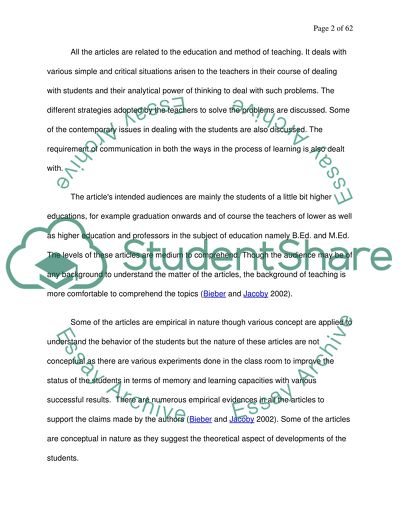Cite this document
(Analysis of Articles about the Education and Method of Teaching Assignment, n.d.)
Analysis of Articles about the Education and Method of Teaching Assignment. Retrieved from https://studentshare.org/education/1554923-review-of-articlesinterp-designing-educational-research
Analysis of Articles about the Education and Method of Teaching Assignment. Retrieved from https://studentshare.org/education/1554923-review-of-articlesinterp-designing-educational-research
(Analysis of Articles about the Education and Method of Teaching Assignment)
Analysis of Articles about the Education and Method of Teaching Assignment. https://studentshare.org/education/1554923-review-of-articlesinterp-designing-educational-research.
Analysis of Articles about the Education and Method of Teaching Assignment. https://studentshare.org/education/1554923-review-of-articlesinterp-designing-educational-research.
“Analysis of Articles about the Education and Method of Teaching Assignment”, n.d. https://studentshare.org/education/1554923-review-of-articlesinterp-designing-educational-research.


